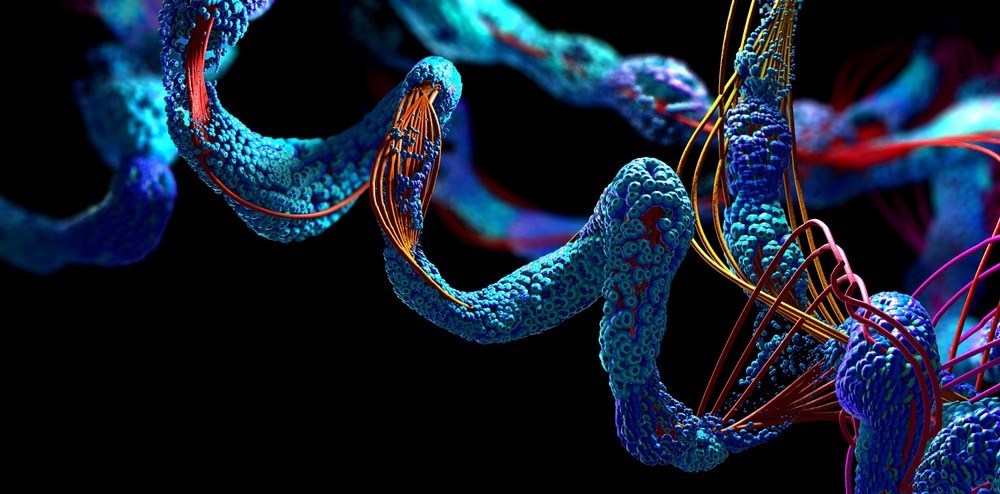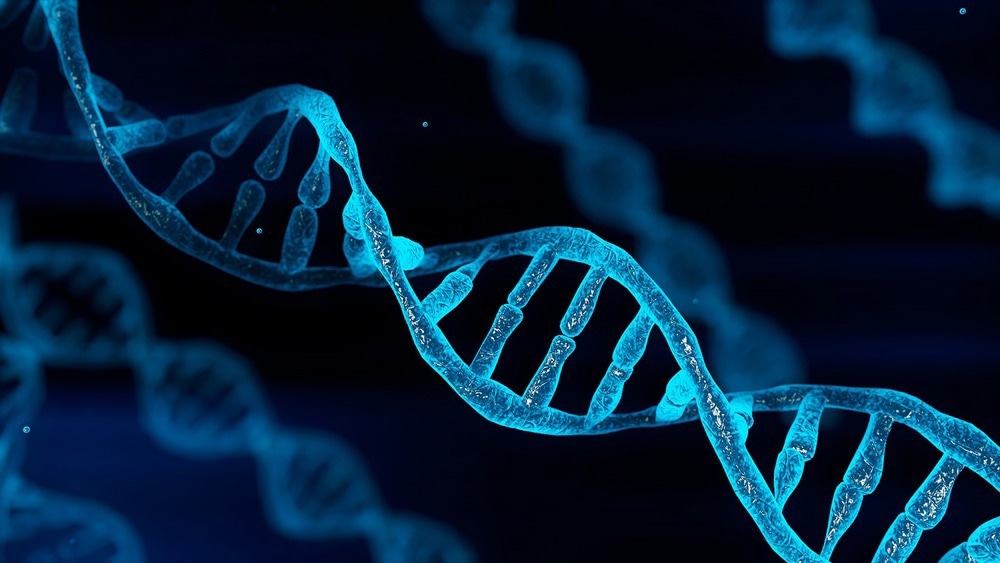Sponsored Content by PittconReviewed by Danielle Ellis, B.Sc.May 26 2023
In this interview conducted at Pittcon 2023 in Philadelphia, Pennsylvania, we spoke to this year’s recipient of the Pittsburgh Analytical Chemistry Award, Neil Kelleher.
Could you introduce yourself and tell us about your professional background?
My name is Neil Kelleher, and I am the director of the Chemistry of Life Processes Institute and Northwestern Proteomics at Northwestern University in Chicago and Evanston, Illinois. I do top-down proteomics.
What first attracted you to the field in which you work?
I was first pulled into science when I was 15 years old, and I worked at a company called Weyerhaeuser, a tree and paper company out in Seattle, Washington. There, I discovered analytical chemistry. As a mere high school student, I was handed a tin of sulfur, or what looked to me at the time, some yellow compound. I was told that I had four months to identify what this substance was, and, in turn, I learned spectroscopy and infrared spectroscopy, all of which led me to a career in biological mass spectrometry.
Detecting Disease Early: The Game-Changing Role of Proteomics | The Pittcon Podcast Episode 1
What is proteomics?
Proteomics is a sprawling field that is associated with protein-level biology. In other words, it is the study of proteins. If genomics is the study of all the genes in an organism or an ecosystem, then proteomics is the study of all the proteins collectively.
What is the difference between the knowledge obtained from proteomics compared to genomics? What can we learn from proteomics that genomics cannot teach us?
Most people are familiar with the so-called central dogma that DNA gives rise through RNA molecules to proteins. The proteins are the worker bees in your bodies.

Image Credit: Christoph Burgstedt/Shutterstock.com
If you point to anywhere on your body, you are pointing to proteins. Proteins are thought to be closer to our biology and disease traits – the more complex traits. Thus, we really need to understand proteins to understand human biology holistically.
How does Fourier transform-based mass spectrometry impact the interpretation of measurements in proteomic applications?
Fourier transform mass spectrometry is like the Porsche of mass spectrometers because of its ultra-high resolution. FTMS breaks down into various types. The most famous ones are FT-ICR, which uses a superconducting magnet, like an MRI in a hospital, and there is also the Orbitrap-style FTMS. Both have had a significant impact on proteomics.
Long considered a specialist technology for physicians and chemists, how important is mass spectrometry in biological research?
FTMS or Fourier transform mass spectrometry is playing an increasing role in biological research, both in proteomics and metabolomics, while also being used to image biological tissues for lipids, energy metabolites, and proteins of ever larger size, as well as to capture proteoforms.
What is top-down proteomics?
Top-down proteomics is a philosophy that we came up with at Cornell to first measure the molecular weight or the composition of the whole protein and then controllably degrade it into pieces. This is in contrast to an approach where the protein is broken into pieces first, and then the protein is rebuilt from the bottom up.
Top-Down Proteomics: Bridging the Genotype-to-Phenotype - Neil Kelleher at Pittcon 2023
Video Credit: Pittcon
Top-down proteomics is the application of a top-down measurement philosophy to proteomics, and its benefit is that it can be used to determine protein composition with complete molecular specificity.
What are the advantages and disadvantages of top-down proteomics?
The advantage top-down proteomics is absolute precision in the molecular analysis of proteins, something that isn’t possible with other techniques.
The disadvantage is that the implementation of it still is lacking, and we need about a hundredfold boost in that ability to capture all the proteoforms, all the different forms of protein molecules in a complex sample like human blood or tissue from any part of the body or other biological model systems.
How is this top-down approach used in research?
Top-down proteomics is used like other proteomics tools in both basic biomedical research and clinical translation. I would say for that last part, there are some real sources of excitement regarding the implementation of proteomics with complete molecular specificity, so top-down proteomics, which determines proteoforms.
If you do that in cohorts of 100 or 200 patients, you will detect strong biological signals as biomarkers, and the world desperately needs these to be able to detect disease earlier so that we can try and develop therapeutics and treatments.
We must be able to detect disease earlier, and top-down proteomics is a major step in achieving this.
What is meant by the term ‘proteoform’?
Thanks to the Human Genome Project, we now know there are about 20,300 human genes that code for proteins, but each protein can be present in many different molecular forms in the human body. These protein forms are otherwise known as proteoforms, and through the Human Proteoform Project, we are interested in creating an atlas - a definitive reference set of proteoforms in human biology.
How does your current work aim to bridge the gap between genotypes and phenotypes?
In biology, there is a widely recognized gap between the genes that encode the molecules that give rise to life and the phenotypes – the genotype-to-phenotype gap. Simply put, there is gap in our understanding of how genes give rise to complex traits, especially disease traits in humans.

Image Credit: MiniStocker/Shutterstock
There are many omics technologies available to help bridge that gap, including exposomics, metabolomics, transcriptomics, and proteomics.
There is a growing idea that proteins are likely to be strong connectors of genotype to phenotype, but proteomics has not fully realized that potential yet. To close that gap, top-down proteomics is essential as it can help to determine proteoforms that can be used to connect genes to phenotypes for basic biomedical research applications and clinical translation. However, this will likely take a few more years as proteoform measurement is a relatively small research area, but it is growing quickly.
What impact has the field of proteomics had on the study of COVID-19 and the causative agent SARS-CoV-2?
The COVID-19 pandemic was a classic case where the concern was an RNA virus, but the proteins that were present were key.
Due to the focus of biomedical research, we already know a large number of proteoforms from SARS-CoV-2, for example the infamous ‘spike protein’, and that is one way we were able to understand both the virus and the drugs that could be used to target the virus. This is just one example of how proteomics as a field is positively impacting biomedical research.
Proteomics also had a major impact on the clinical detection and treatment of COVID-19, specifically when studying the serology and antibody responses of patients, or antibodies as treatments for COVID-19.
What does it mean to you to be this year’s recipient of the Pittsburgh Conference Achievement Award?
I could not have been more excited to have been given this award. When I got the news from Brian and the award committee a couple of months ago, I was absolutely floored and have been excited ever since.
The day I received the news was the best day in well over three years of the pandemic.
What are you working on right now that you are particularly excited about?
I am particularly excited about the prospects of reaching a tipping point on the Human Proteoform Project. It is the equivalent of the genome project but for proteins. Our aim is to sequence, map, and define the human proteome like we did the genome two decades ago.
There have been major movements in the private sector over the last three years as proteomics companies have started to go public. They have had major investments from large venture capital firms and institutional investors. Now we need the world’s governments to step in, as they did with the Human Genome Project, to help create the definitive reference atlas of the proteoforms in human biology.
What are you looking forward to most about Pittcon 2024 in San Diego?
I think San Diego is a great location to continue Pittcon 2024. The floor at Pittcon 2023 was vibrant, with attendees returning to face-to-face interactions – this was the exact energy that we expected and remembered from pre-COVID Pittcon.
Why is it so important for people to come together face-to-face to exchange ideas and build relationships?
Face-to-face interactions are pivotal, and I think we saw this at Pittcon 2023 in Philadelphia. Individuals were energized by the ability to collaborate and communicate, whether in the private sector or academics. Pittcon has been a beautiful way to get experts from across the field together. I have personally missed that. I must also add that I am tired of working over Zoom and believe we need to return to business as usual.
Pittcon was also a great place to recruit new students. Many of my strategic goals were met thanks to the benefit of face-to-face interactions, whether via professional meetings or out at a bar in the evening. All kinds of interactions take place at Pittcon, including business, academic, cross-sector, and government.
Interpersonal exchanges are also key to opening the world back up, especially for our trainees and the next generation of Pittcon attendees and student professionals.
About Neil Kelleher
Neil Kelleher is an internationally recognized expert in the areas of top-down proteomics, natural product discovery, and cancer epigenetics. The Kelleher Group pioneers cutting-edge technologies for understanding the role of proteins in health and disease and more specific diagnostics based on proteoform systems medicine. Kelleher is a leading voice in the Human Proteoform Project, a global research initiative to create the definitive set of reference proteoforms created from the 20,300 genes in the human genome. A serial entrepreneur, he has spun out successful companies and recently helped found two new ones. His contributions have been recognized by multiple awards, including the Biemann Medal from the American Society for Mass Spectrometry, the Pfizer Award in Enzyme Chemistry from the American Chemical Society, and a Searle Scholar Award. Kelleher joined Northwestern in 2009.
The Kelleher Group pioneers cutting-edge technologies for understanding the role of proteins in health and disease and more specific diagnostics based on proteoform systems medicine. Kelleher is a leading voice in the Human Proteoform Project, a global research initiative to create the definitive set of reference proteoforms created from the 20,300 genes in the human genome. A serial entrepreneur, he has spun out successful companies and recently helped found two new ones. His contributions have been recognized by multiple awards, including the Biemann Medal from the American Society for Mass Spectrometry, the Pfizer Award in Enzyme Chemistry from the American Chemical Society, and a Searle Scholar Award. Kelleher joined Northwestern in 2009.
 About Pittcon
About Pittcon
Pittcon is the world’s largest annual premier conference and exposition on laboratory science. Pittcon attracts more than 16,000 attendees from industry, academia and government from over 90 countries worldwide.
Their mission is to sponsor and sustain educational and charitable activities for the advancement and benefit of scientific endeavor.
Pittcon’s target audience is not just “analytical chemists,” but all laboratory scientists — anyone who identifies, quantifies, analyzes or tests the chemical or biological properties of compounds or molecules, or who manages these laboratory scientists.
Having grown beyond its roots in analytical chemistry and spectroscopy, Pittcon has evolved into an event that now also serves a diverse constituency encompassing life sciences, pharmaceutical discovery and QA, food safety, environmental, bioterrorism and other emerging markets.